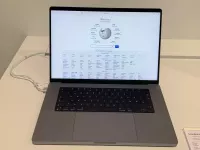Consumer Reports (CR), previously known as Consumers Union (CU), is a U.S.-based non-profit organization. It conducts independent testing of products, performs investigative journalism, undertakes consumer-oriented research, and provides public education. CR also engages in consumer advocacy on various issues.
1927: Your Money's Worth Publication and Consumers' Research Founding
In 1927, F.J. Schlink and Stuart Chase published "Your Money's Worth", leading to the founding of Consumers' Research by Schlink. The company then published Consumers’ Research Bulletin.
1933: Consumers' Research Subscriber Count and Move to New York City
In 1933, Consumers' Research reported over 42,000 subscribers and moved its operations to New York City.
February 1936: Consumers Union Founded
In February 1936, former Consumers' Research employees, along with journalists, engineers, academics, and scientists, founded Consumers Union, now known as Consumer Reports.
1936: Consumer Reports Founded
In 1936, Consumer Reports (CR) was founded as a source of information for consumers to assess product safety and performance.
1937: Establishment of Crowell Institute on Consumer Relations
In 1937, The Crowell Institute on Consumer Relations was founded by The New York Herald Tribune to suppress consumer groups, by asserting that businesses were already taking consumer needs into account.
1938: Dies Committee Investigation
In 1938, Consumer Union (CU) was investigated by The Dies Committee for "unpatriotic propaganda", with CU and its CEO Arthur Kallet accused of Communist ideals.
1940: Consumers Union Surpasses Consumers' Research in Subscribers
By 1940, Consumers Union surpassed Schlink's Consumers' Research in subscribers, accumulating a readership of 71,000.
1954: Removal from Subversive Organizations List
In 1954, the House Un-American Activities Committee removed Consumers Union from its list of subversive organizations.
1960: Creation of Consumers International
In 1960, Consumer Reports helped create the global consumer group Consumers International.
1968: AMC Ambassador Rated "Not Acceptable"
In 1968, the AMC Ambassador was rated as "not acceptable" by Consumer Reports.
1971: Lawsuit Filed by Bose Corporation
In 1971, Bose Corporation sued Consumer Reports for libel after a review stated that the sound from the reviewed system "tended to wander about the room".
1974: Financial Assistance to Consumers' Checkbook
In 1974, Consumer Reports provided financial assistance to Consumers' Checkbook, a similar service for local services.
1974: Rhoda Karpatkin Appointed Executive Director
In 1974, Rhoda Karpatkin was appointed as the executive director of Consumer Reports.
1975: Ralph Nader Leaves Board of Directors
In 1975, Ralph Nader left the board of directors of Consumer Reports due to a "division of philosophy" with Executive Director Rhoda Karpatkin.
1977: Joan Claybrook head of the National Highway Traffic Safety Administration
In 1977, Joan Claybrook was the head of the National Highway Traffic Safety Administration.
July 1978: Dodge Omni/Plymouth Horizon Rated "Not Acceptable"
In the July 1978 issue, Consumer Reports rated the Dodge Omni/Plymouth Horizon automobile "not acceptable" due to oscillatory yaw, being the first car to be judged that way since 1968.
1980: Publication of Penny Power
In 1980, Consumer Reports published a kids' version of Consumer Reports called Penny Power.
1981: Joan Claybrook head of the National Highway Traffic Safety Administration
In 1981, Joan Claybrook was the head of the National Highway Traffic Safety Administration.
1982: Joan Claybrook on CR board
In 1982, Joan Claybrook served on the board of CR.
1988: Consumer Reports deems Suzuki Samurai "not acceptable"
In 1988, Consumer Reports announced the Suzuki Samurai had a tendency to roll and deemed it "not acceptable".
1990: Consumer Reports Television Launched
In 1990, Consumer Reports launched Consumer Reports Television.
1996: Suzuki Sues Consumer Reports
In 1996, Suzuki sued Consumer Reports after the Samurai was again mentioned in a Consumer Reports anniversary issue.
December 1997: Isuzu Trooper Distributor Sues Consumer Reports
In December 1997, the Isuzu Trooper distributor in Puerto Rico sued Consumer Reports, alleging lost sales due to disparagement of the Trooper.
February 1998: Consumer Reports Retracts Iams Dog Food Report
In February 1998, Consumer Reports retracted its report that Iams dog food was nutritionally deficient, citing "a systemic error in the measurements of various minerals".
1998: Launch of Consumer Reports WebWatch
In 1998, Consumer Reports launched the grant-funded project Consumer Reports WebWatch, aimed at improving website credibility.
October 2000: Lawsuits Against Consumer Reports
As of October 2000, Consumer Reports had been sued by 13 manufacturers unhappy with reviews of their products and had never lost a case.
2000: Zillions Magazine Folded
In 2000, Zillions magazine, the kids' version of Consumer Reports, folded.
October 31, 2003: Consumer Reports moves for dismissal
On October 31, 2003, Consumer Reports moved for dismissal of the product disparagement lawsuit filed by Sharper Image over negative reviews of its Ionic Breeze Quadra air purifier.
2003: Nissan Murano Not Recommended
In 2003, Consumer Reports did not recommend the Nissan Murano crossover utility vehicle due to a power steering issue, even though it had above-average reliability.
July 2004: Settlement Reached in Suzuki Lawsuit
In July 2004, the lawsuit between Suzuki and Consumer Reports was settled and dismissed with no money changing hands and no retraction issued; however, Consumer Reports agreed to no longer refer to the 16-year-old test results of the 1988 Samurai in its advertising or promotional materials.
November 2004: Sharper Image Lawsuit Dismissed; Consumer Reports Awarded Fees
In November 2004, the product disparagement lawsuit filed by Sharper Image against Consumer Reports was dismissed. Consumer Reports was also awarded $525,000 in legal fees and costs.
March 2005: Consumer Reports Television Reach
By March 2005, Consumer Reports Television was "hosted" by over 100 stations.
2005: Nissan Murano Recommended
Consumer Reports recommended the 2005 model of the Nissan Murano in 2005 after the power steering issue was addressed.
2005: Launch of Greener Choices Service
In 2005, Consumer Reports launched the service Greener Choices, intended to provide information about environmentally-friendly products and practices.
August 1, 2006: ShopSmart Magazine Launched
On August 1, 2006, Consumer Reports launched ShopSmart, a magazine aimed at young women.
2006: Consumer Reports Updates Hybrid Vehicle Savings Report
In 2006, Consumer Reports initially stated six hybrid vehicles would probably not save owners money, but later updated the report after discovering a miscalculation in depreciation, stating that four of the six vehicles would save buyers money if kept for five years.
2006: Use of Outside Labs for Testing
In 2006, Consumer Reports used outside labs for testing, including for 11 percent of tests.
2006: Joan Claybrook on CR board
In 2006, Joan Claybrook served on the board of CR.
January 18, 2007: Consumer Reports Posts Note on Website Regarding Misleading Tests
On January 18, 2007, Consumer Reports posted a note on its homepage about the misleading child safety seat tests. The article was removed from the CR website.
January 28, 2007: Op-Ed Published in The New York Times
On January 28, 2007, The New York Times published an op-ed from Joan Claybrook, a former board member of Consumer Reports, discussing the events leading to the publishing of erroneous information regarding child safety seats.
February 2007: Consumer Reports Issues Child Safety Seat Report
In February 2007, Consumer Reports stated that only two of the child safety seats it tested passed the organization's side impact tests.
2007: Acceptance of Expert Advice on Test Design
In 2007, in response to errors in infant car seat testing, Consumer Reports began accepting advice from experts on designing tests, but not on final assessments.
2008: Acquisition of The Consumerist Blog
In 2008, Consumer Reports acquired The Consumerist blog from Gawker Media.
July 31, 2009: Shutdown of Consumer Reports WebWatch
As of July 31, 2009, Consumer Reports WebWatch was shut down, although the site is still available.
2012: Name Change to Consumer Reports
In 2012, Consumers Union changed its name to Consumer Reports, due to the latter being more familiar to the public.
2015: Lobbying Expenses
In 2015, Consumer Reports spent $200,000 on lobbying activities.
April 2016: Subscriber Count and Testing Budget
As of April 2016, Consumer Reports had approximately 7 million subscribers and an annual testing budget of approximately US$25 million.
September 2016: Consumer Reports Revamps Rating System
In September 2016, Consumer Reports significantly revamped the appearance of its rating system, replacing Harvey balls with color-coded circles to improve clarity.
2016: Inconsistent Battery Life in MacBook Pro Testing
In 2016, Consumer Reports found wildly inconsistent battery life in its testing of Apple's 2016 MacBook Pro, leading to the discovery of a bug in the Safari web browser, which Apple promptly fixed.
2017: Closure of The Consumerist Blog
In 2017, The Consumerist blog was shuttered, and its content was folded into the Consumer Reports website.
May 2018: Tesla Model 3 Not Recommended Initially
In May 2018, Consumer Reports initially said it could not recommend the Tesla Model 3 due to concerns about its long stopping distance.
July 2018: Membership Count
In July 2018, Consumer Reports had around 6 million members.
2021: Grant from Climate Imperative Foundation
In 2021, Consumer Reports accepted a $375,000 grant from the Climate Imperative Foundation to examine gas stoves and indoor air quality.
2022: Publication of "Is Your Gas Range a Health Risk?"
On October 4, 2022, Consumer Reports published an article entitled "Is Your Gas Range a Health Risk?" which was funded in part by a grant from the Climate Imperative Foundation.
2025: Phil Radford Appointed CEO
In 2025, Phil Radford was appointed as the president and chief executive officer (CEO) of Consumer Reports.
Mentioned in this timeline

The MacBook Pro is Apple's high-end Mac laptop first introduced...
Puerto Rico is a self-governing Caribbean archipelago and an unincorporated...

An apple is a widely cultivated edible fruit originating in...
The New York Times NYT is a prominent American newspaper...

A car also known as an automobile is a wheeled...

Air purifiers are devices designed to enhance indoor air quality...
Trending
6 months ago Jay Leno Reflects on Jimmy Kimmel's 2010 'Tonight Show' Jokes and Perceived Humiliation.
4 months ago Tessa Thompson: A Look at Her Career and Accomplishments

20 days ago New Documentary Explores the Life and Career of Martin Scorsese: A Genius?

10 days ago Ethan Hawke stars in 'Blue Moon,' a Broadway depiction by Richard Linklater.

Dan Aykroyd is a Canadian actor comedian screenwriter and producer best known for his work on Saturday Night Live and...

7 months ago Max Christie's Connection to Doug Christie Explored Amid Mavericks' Winning Streak.
Popular

Nancy Pelosi is a prominent American politician notably serving as...

Zohran Kwame Mamdani is an American politician currently serving as...

William Franklin Graham III commonly known as Franklin Graham is...

Chuck Schumer is the senior United States Senator from New...
Abigail Spanberger is an American politician who served as the...

Gavin Newsom is an American politician and businessman currently serving...